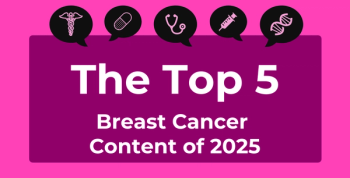
Phase 3 Trial Backs First-line Use of Cemiplimab With Chemotherapy in aNSCLC
With these new findings coming from the EMPOWER-Lung 3 trial, the anti-programmed cell death-1 inhibitor cemiplimab is now just the second of its kind to show efficacy in these patients as both monotherapy and as a combination regimen, regardless of histology.
Findings from a phase 3 trial of patients with advanced non-small cell
Cemiplimab previously demonstrated favorable efficacy as monotherapy compared with chemotherapy in the EMPOWER-Lung 1 trial, leading to its 2021 approval for advanced NSCLC with high programmed cell death-1 (PD-L1) expression (tumor proportion score ≥50%), and with no EGFR, anaplastic ALK or ROS1 aberrations.
With these new findings coming from the EMPOWER-Lung 3 trial, the anti–PD-L1 inhibitor is now just the second of its kind to show efficacy in these patients as both monotherapy and as a combination regimen, regardless of histology, the researchers
“EMPOWER-Lung 3 addresses an unmet clinical need for patients with locally advanced disease who are not candidates for surgical resection or definitive chemoradiation. NCCN guidelines recommend that patients with unresectable stage IIIA and IIIB NSCLC receive definitive concurrent chemoradiation followed by consolidation with durvalumab (anti-PD-L1),” wrote the researchers.“However, for patients who are not candidates for concurrent chemoradiation, platinum-based chemotherapy remains the only standard of care available. EMPOWER-Lung 3 included patients with locally advanced disease who are not candidates for definitive chemoradiation (14.8% of the total patient population), thus providing prospective data to guide treatment for these patients rather than extrapolating from stage IV disease, as is often done in practice.”
A total of 466 patients were included in the study. Combined with investigator’s choice of platinum-doublet chemotherapy, cemiplimab yielded a median overall survival—the study’s primary endpoint—of 21.9 months (95% CI, 15.5–not evaluable) compared with 13 months (95% CI, 11.9–16.1) seen with chemotherapy alone (HR = 0.71; 95% CI, 0.53–0.93; P = .014). The study’s secondary endpoint—proportion of patients alive at 12 months—also favored the combination, with 65.7% of patients receiving cemiplimab plus chemotherapy alive at 12 months compared with 56.1% of patients receiving chemotherapy alone.
Median progression-free survival was 8.2 months for the combination compared with 5 months for chemotherapy alone (HR = 0.56; 95% CI, 0.44–0.70; P <.0001). Overall response rate was 43.3%, with a 2.6% complete response (CR) rate, for the combination and was 22.7% for chemotherapy alone, with no CRs.
While noting that the study was not powered to analyze efficacy among subgroups, the researchers added that OS was improved in both histology subgroups. Among patients with squamous histology, median OS was 21.9 months with the combination compared with 13.8 months for chemotherapy alone. Among patients with nonsquamous histology, median OS was 15.8 months for the combination compared with 13 months for chemotherapy alone. OS was also favorable for the combination among women, never smokers, and patients with PD-L1 <1%.
“In addition, the patient eligibility criteria of this study were designed to closely resemble the real-world patient population undergoing first-line treatment for advanced NSCLC, including patients with unresectable locally advanced disease not suitable for definitive chemoradiation; patients with previously treated and controlled brain metastases (symptoms were controlled without immunosuppressive doses of steroids, as is most often done in clinical practice, without mandatory radiological evidence of response to treatment); patients with known controlled viral infections (for example, hepatitis B virus, hepatitis C virus or HIV); and patients who were never smokers.”
Grade ≥3 treatment-emergent adverse events (TEAE) were reported in 43.6% of patients receiving cemiplimab plus chemotherapy compared with 31.4% of patients receiving chemotherapy alone. The most common grade ≥3 TEAEs with the combination included anemia (9.9%) and neutropenia (5.8%). TEAEs of any grade occurred in 95.8% of patients receiving the combination and in 94.1% of patients receiving chemotherapy alone. Throughout the study, 5.1% of patients receiving the combination and 2.6% of patients receiving chemotherapy alone discontinued treatment due to TEAEs.
Reference
Gogishvili M, Melkadze T, Makharadze T, et al. Cemiplimab plus chemotherapy versus chemotherapy alone in non-small cell lung cancer: a randomized, controlled, double-blind phase 3 trial. Nat Med. Published online August 25, 2022. doi:10.1038/s41591-022-01977-y
Newsletter
Stay ahead of policy, cost, and value—subscribe to AJMC for expert insights at the intersection of clinical care and health economics.









































